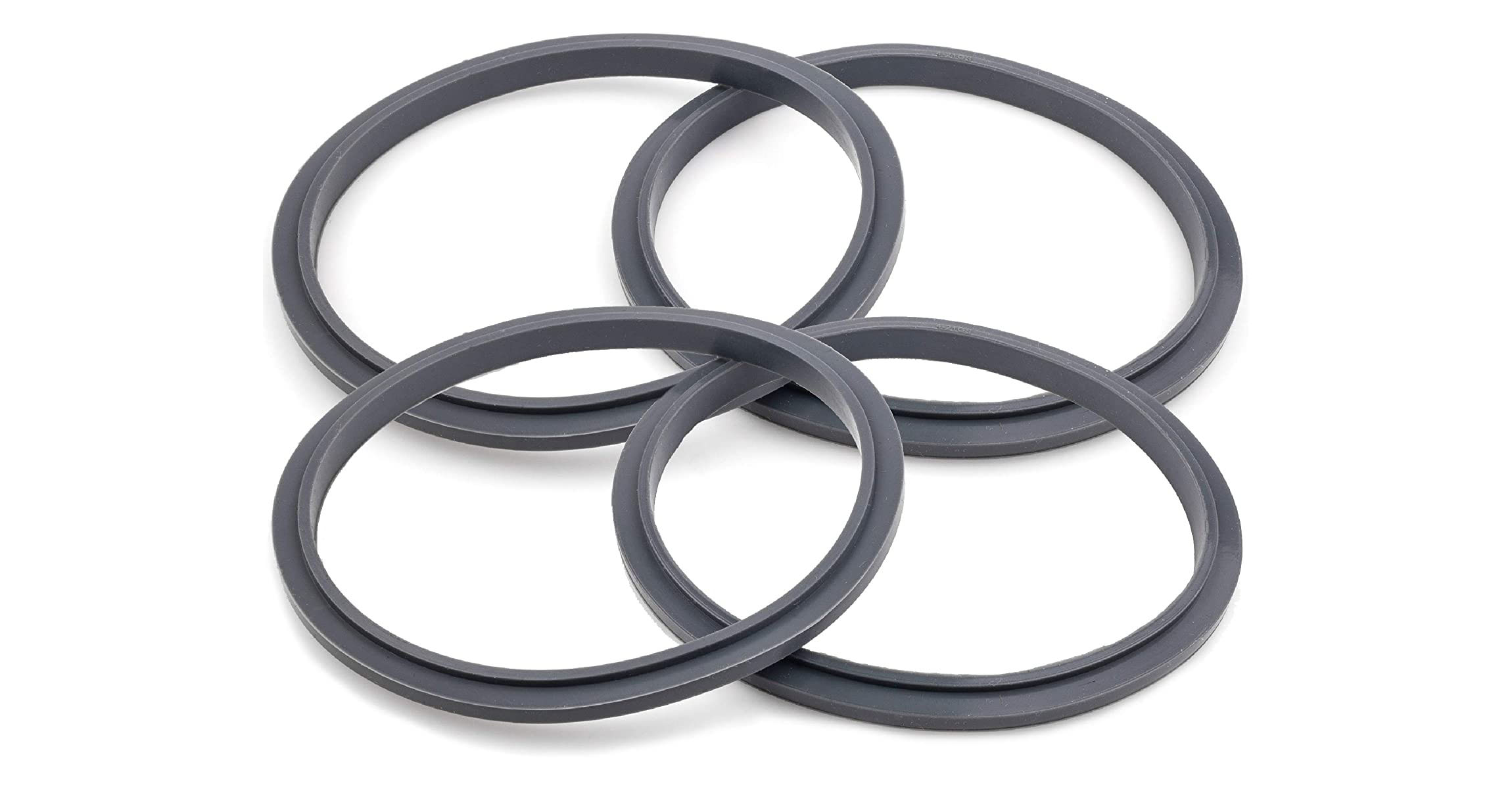There are gaskets all over the place. You can find them in your car, at work, and even in the air! A gasket is a term that refers to any seal or grommet that connects two objects. Rubber, plastic, metal, and other materials can make gaskets. The type of material you use depends on why you need a gasket. The gap between two surfaces is sealed by a gasket, also known as an O-ring or washer. These items are typically made of rubber and come in various sizes and shapes, depending on their intended use.
The flat gasket is the most common type of gasket. Its cross-section is shaped like a circle. Cylindrical gaskets range from 1/4 inch to 3 inches in diameter. The diameter of cylindrical gaskets is usually round. The tubular gasket looks like a long tube with different diameters.
Blender blades are typically made of stainless steel and consist of two or more blades connected by a central component that whirls around to cut. The rubber ring that fits between the blades and the bottom of the blender jar, known as the seal ring or gasket, keeps the edges from leaking.
Where Does the Rubber Gasket on A Blender Go?
The gasket goes between the jar portion and the ring portion. Oil resistance is a feature of rubber gasket sheet material. As a result, it is an excellent general-purpose rubber with superior long-term performance. A blender’s rubber gasket sheet can be used for various purposes, including plumbing, sealing, protection, abrasion, support, leveling, bumper protection, and other rubber-based applications.
What Does Gasket Do in A Blender?
It is unquestionably a poor idea to use your blender without the appropriate gasket. It’s like pouring water into a basket when using a blender without this component. On its own, the blender jar cannot hold or spot liquids from spilling.
When you pour components into your blender for processing (whether solid or liquid ingredients), the rubber ring provides assurance and confidence in the blender’s usage.
The rubber ring keeps our ingredients safe, but it also supports our working environment clean and saves us energy. To explain, it keeps your components safe by preventing them from leaking through the gap between the jar and the blade.
It provides a clean working environment by preventing spillage during mixing and conserving energy.
Consider the stress you’ll feel if you have ingredients strewn around your countertop, kitchen floor, walls, clothes, and other surfaces. However, when we operate a blender with the rubber ring in place, our worries fade away.
If your rubber seal or blender gasket has failed because it has surpassed its elasticity limit, has been cut because of contact with a sharp object during cleanup/maintenance, or has been damaged somehow. If you don’t have a gasket for your blender, don’t use it. We are frequently compelled to handle situations since most of us cannot go a day without using our kitchen blender. Choosing to take a chance by controlling some life circumstances is usually disastrous. It is possible to replace it with a new one. Almost every part of a kitchen blender may be found in a store—visits local and internet retailers to replace any broken or worn out.
How Do You Assemble a Blender?
- Let’s start clean! Be sure to wipe your blender’s base with a warm and bubbly towel before assembling it, then wipe it clean. Using a soft cloth, dry the dish. Warm, sudsy water should be used to clean the blender jar, lid, collar, and blades. Finally, rinse and dry the pieces.
- Place the blender jar on its side. On the blade assembly, place the tiny sealing ring.
- Insert the blade assembly with the sealing ring into the jar’s bottom opening.
- Attach the collar to the jar with a twist. Make that the threads are correctly and securely engaged, right-side-up the assembled jar.
- Cover the blender jar with the lid.
- To shorten the power cable, coil it into the storage compartment on the bottom of the power base.
- Set the jar on top of the power supply.
- Use a grounded 3-prong outlet to connect the power cord. Now it’s time to put your mixer to work.
- Check your blender, and be sure to push the button or pad that allows you to disengage the jar before removing it entirely from the power base.
- Do not twist the jar when you lift it straight up with the collar connected. Instead, wait until you’re ready to remove the blade assembly before unscrewing the glass jar from the collar. With liquids within the jar, loosening the collar will cause them to seep out.
Do not touch the blades while the red warning light flashes or the blender is still on.
- Do not obstruct the blade’s motion.
- Do not remove the lid from the blender jar.
Unplug the blender and take it to a service center if the red indicator light is not flashing.
Where Does the Rubber Band Go on The Nutribullet?
The rubber-band-like object within your blade is a gasket. They’re tough to spot unless you know what you’re looking for. The gasket guarantees that your knife is well-sealed. If this loosens, you’ll have a leaky mess when you use your Nutribullet. Individual gaskets are not available. Instead, a deep-seated gasket is included with each blade to prevent it from falling out.
The company that sells Nutribullets do not sell replacement gaskets since they’re difficult to install correctly and can stretch or be damaged. So do not purchase them if you happen to come to such Nutribullet gaskets for sale. They’re fake, and you shouldn’t use them with your Nutribullet. Instead, the company suggests changing the blade assembly if the gasket becomes unseated.
The main picture is from Amazon – CloudCUP Store. As an Amazon Associate I earn from qualifying purchases.

